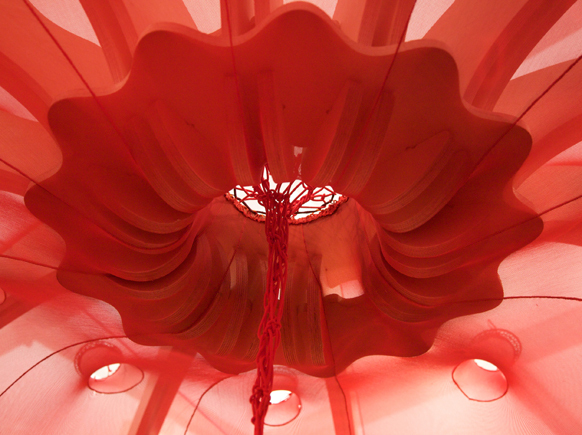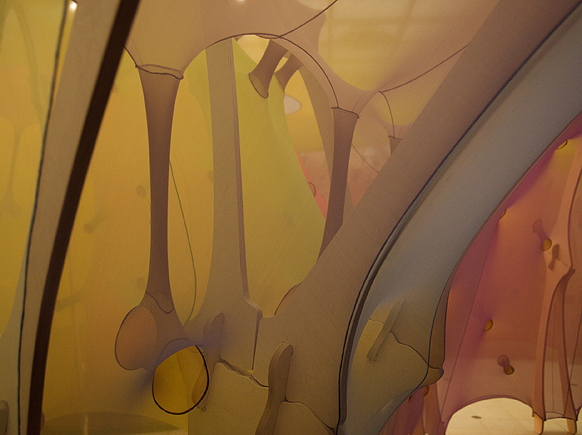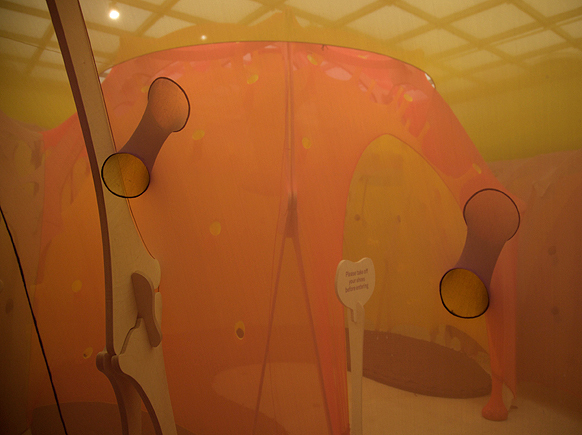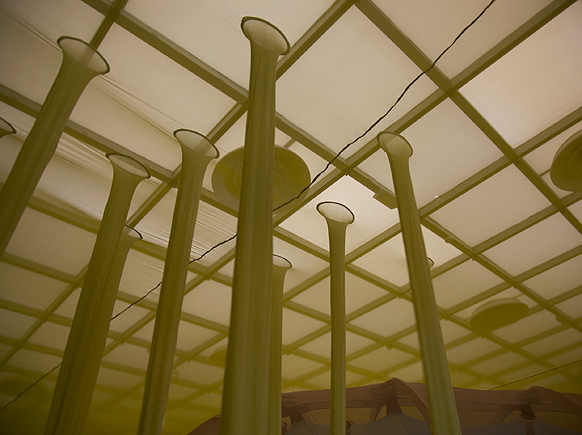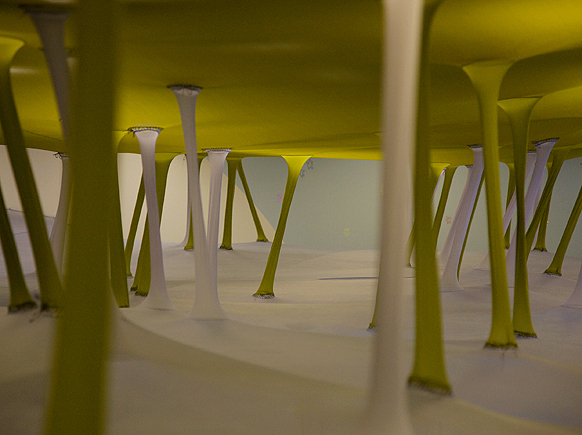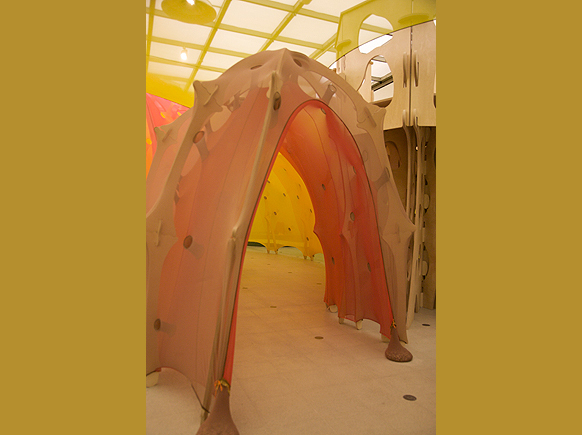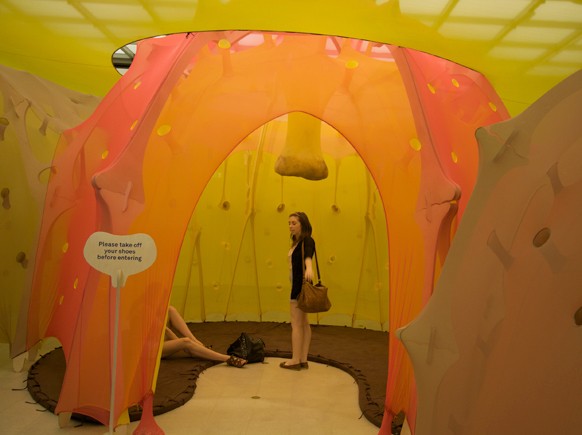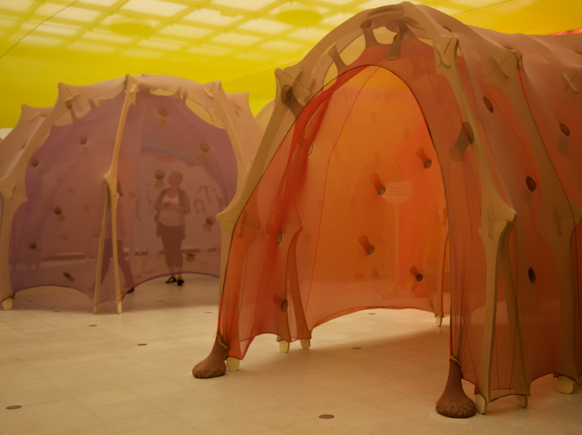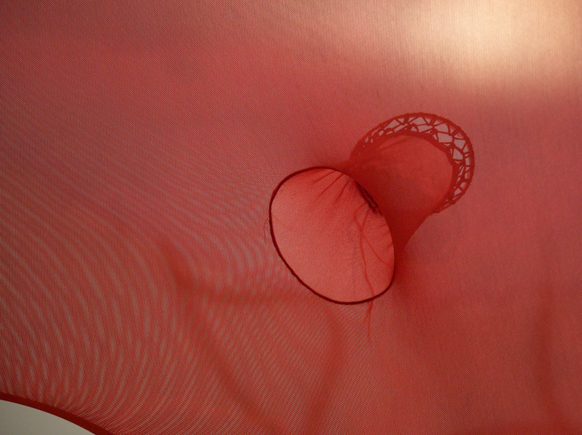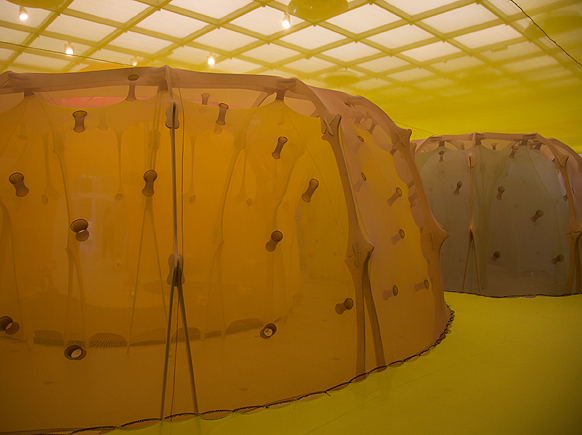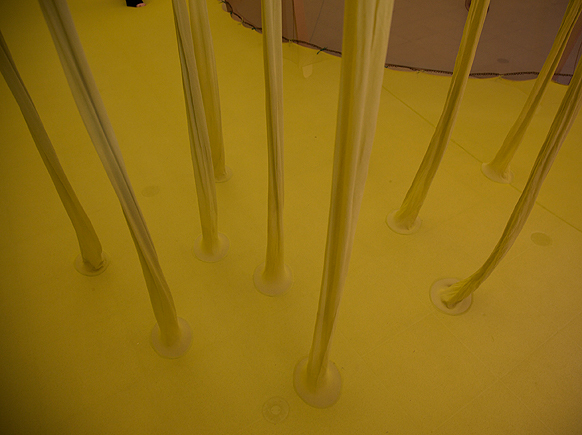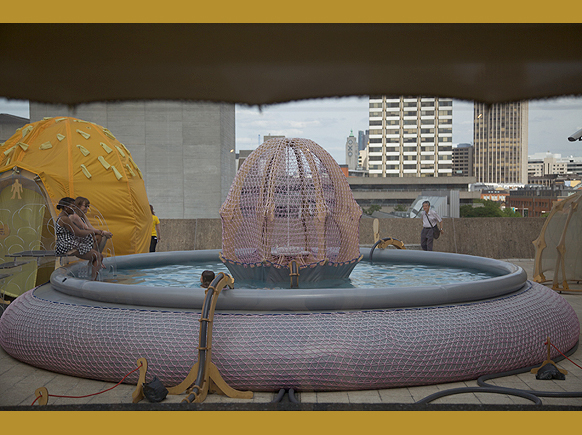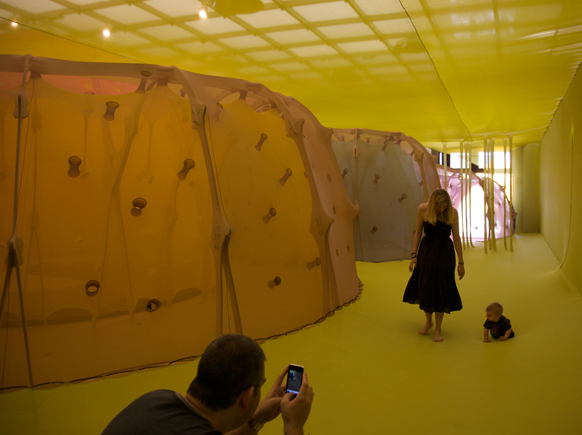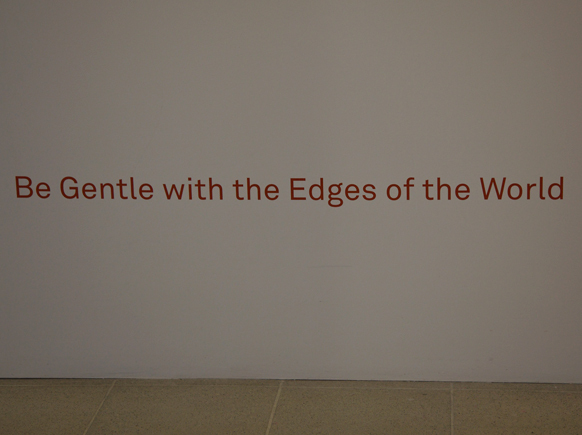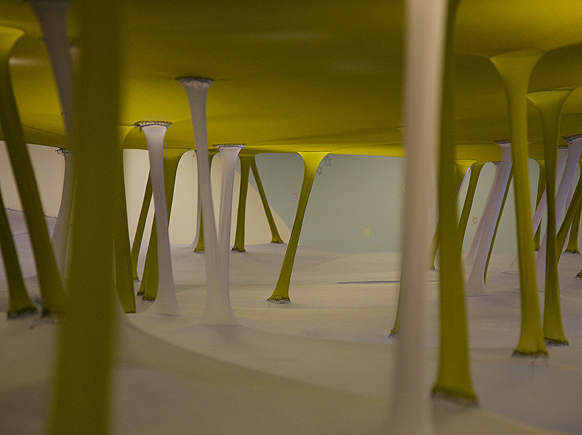Making the Lightness of Being bearable
The sculptures of Brazilian artist Ernesto Neto are always unique, because they concentrate on the space inside as well as the shapes he creates. Sometimes you wander inside an installation as well as around or through one. With ‘The Edges of the World’, Neto literally stitches together different dimensions of space, inviting you to explore all of them.
This piece was created by Neto to re-open London’s Hayward Gallery after it was closed for maintenance during early 2010. The commission required Neto to creatively link the Gallery’s entire upper floor with its three outdoor terraces. With their bland white surfaces, basic concrete structure and low ceilings, these were not the most promising spaces.
Yet he changed them completely by creating a series of tunnels, oases and ‘lookout towers’, all made from his signature skin-like stretchy tulle and in bright colours that blend together. The resulting impression is that of a summery haze.
The specialty of this artist is to fully inhabit a space, by turning it into a new universe that, while very much his own, opens itself to anyone.
This installation also includes metal sculptures Neto says were inspired by Constantine Brancusi. It rests on wooden ‘bones’ the artist associates with Italian Arte Povera and another inspiration was French tightrope walker Philippe Petit (who daringly walked both between Manhattan’s Twin Towers and across the Seine, between the Palais de Chaillot and the Eiffel Tower).
This artist says he likes the sweep of Alexander Calder’s sculptures, the resourcefulness of artist Joseph Beuys, the boldness of American minimalists Donald Judd and Richard Serra – but also the participation demanded by his Brazilian predecessor Hélio Oticicica.
He often calls his pieces ‘naves’, a shortened version of the word espaçonave, Portuguese for ‘spaceship’.
But here Neto takes us inside a world where the edges can meet. This means the edges of knowing, the limits of seeing and the brink of change. It’s a poetic piece, because it involves such fundamental truths. The stretched fabric, for instance, depends on ‘facts’ like gravity, tension and weight; it’s anchored in many places by stones or bags of sand.
The piece also includes allusions to the ways humans understand life, drawing in the abilities to view, to connect sights and to smell. As with most of Neto’s work, pockets of scented herbs are sewn into the structures and there are heavy bags filled with aromatic spices.
The installation has interest for all ages without condescension. It even includes a summer swimming pool on one outside terrace.
So what’s the verdict? One of Neto’s most magical transformations of a space yet. Just as successful – in a completely different way – as the massive and interwoven Léviathon Thot created by the same artist inside the Paris Pantheon.


